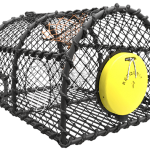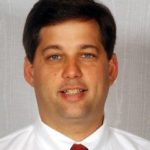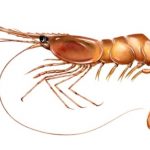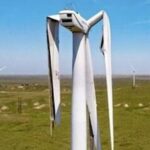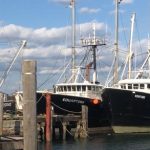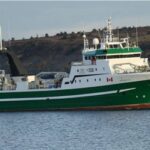Monthly Archives: August 2021
Athearn Marine Agency Boat of the Week: 104′ RSW Lobster/Crabber/Seiner, 850HP Cat, 2 Deere Auxiliaries
 To review specifications, information, and 51photos, >click here<, Vessel in good condition, and would make a great salmon tender seiner or west coast crabber. To see all the boats in this series >click here< 11:28
To review specifications, information, and 51photos, >click here<, Vessel in good condition, and would make a great salmon tender seiner or west coast crabber. To see all the boats in this series >click here< 11:28

Offshore Wind Farms: NJ forcefully tips its hand, as we read this stuff delivers a fraction of its total capacity!
Governor Phil Murphy has set a goal for 7500 megawatts of offshore wind-generated electricity by 2035. It is an ambitious goal. It is also a goal that leaves little time for the niceties of public engagement and dialogue. The state clearly showed that it has a plan, and it is going to implement it regardless of public acceptance. Two state actions this month make that abundantly clear. >click to read<, as we read today, Wind Turbines & Solar 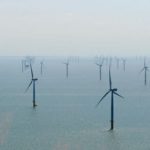 Panels Deliver Tiny Fraction of Their Total Capacity – There’s a yawning gulf between what wind turbines and solar panels are capable of delivering and what’s actually delivered. Sunset and calm weather will do it every time. wind and solar advocates always overstate the output of wind turbines and solar panels; and then, only in terms of pointless averages. The subterfuge is as much about omission as embellishment. >click to read< 10: 09
Panels Deliver Tiny Fraction of Their Total Capacity – There’s a yawning gulf between what wind turbines and solar panels are capable of delivering and what’s actually delivered. Sunset and calm weather will do it every time. wind and solar advocates always overstate the output of wind turbines and solar panels; and then, only in terms of pointless averages. The subterfuge is as much about omission as embellishment. >click to read< 10: 09

As Salmon and Squid Seasons Rebound, New Questions
Over the last few months, hundreds of boats have been fishing off of, or transiting along Santa Cruz County’s coastline. Industry analysts report plenty of bright spots in both the salmon and squid markets this season. But after some scientific studies were scuttled last year because of the coronavirus pandemic, and other research couldn’t be completed due to wildfires, fisheries management is still undergoing its own pandemic comeback, as climate change fears remain ever-present. “It’s definitely been a good season,” Scotts Valley resident Hans Haveman, the CEO of H&H Fresh Fish at the Santa Cruz Harbor says during a late-June interview. “Unfortunately, regulation from the state and feds have shut us down right when it’s goin’ good.” video, >click to read< 08:50
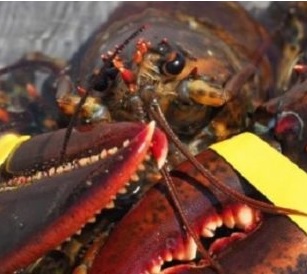
Lobster Economics in Knox County – Lobster catch carries on maritime tradition, fuels economy
The lobster industry is a vital one for the region, earning harvesters $111 million in 2020 with a catch of slightly more than 25 million pounds. Statewide, nearly 97 million pounds of lobsters were landed in 2020 in Maine with harvesters paid $406 million. Lobsters account for 79 cents of every $1 of seafood landed in Maine. The overwhelming bulk of the lobsters are caught from July through November. The $111 million paid to Knox County harvesters in 2020 is down from the $143 million earned in 2019. >click to read< 08:05
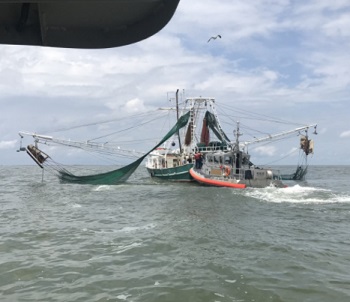
Coast Guard medevacs fisherman near Grand Isle, La.
The Coast Guard medevaced a fisherman Tuesday from a vessel 4 miles south of Grand Isle, Louisiana. Watchstanders with Coast Guard Sector New Orleans received a report from the 67-foot commercial fishing vessel, F/V Miss Melissa, that one of their crewmembers was suffering heat attack-like symptoms. photos, >click to read< 22:12

Poole family in support of proposal to restore fishing trawler Pacific Venture in Laurieton.
Australian film director Damien Lay has previously announced intentions to restore the historic trawler and make it the subject of an international documentary. The vessel was built by residents and became a key boat in the extensive Camden Haven fishing fleet during the 1960s and 1970s. It is now the only remaining vessel intact in the area. Former owner Kim Poole, 65, the son of original boat owner Donald ‘Jock’ Poole, said he began working on the boat when he was 13-years-old. “It wasn’t the last boat built in Laurieton, but it supplied the fish coop for many years in the 1970s and 1990s, and there were some record catches made onboard. photos, >click to read< 21:38

Pandemic, labor , product shortages, and supply chain issues disrupt Dungeness Crab market
Seafood distributors, sellers and processors point to a number of factors that converged to create a perfect storm: the coronavirus pandemic, labor shortages, product shortages, supply chain issues and market demands. All have contributed to drive prices up from the usual $25 or so per pound to as much as $52. This season was difficult for many in the industry. It opened late and yielded a mere 12 million pounds to date, compared to last year’s 20 million. On average, commercial crabbers land around 16 million pounds in Oregon, though the fishery can be cyclical, with boom and bust periods. >click to read< 19:13
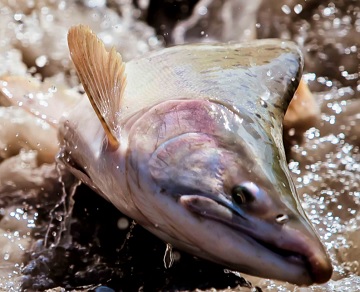
Invasive pink salmon populations are increasing throughout native Atlantic salmon waters
Fisheries biologists have been wringing their hands for decades in cold-water regions of the Pacific Ocean due to the proliferation of farmed Atlantic salmon and the threats they pose to native fish and the health of inshore waters, both in North America off the coasts of the U.S. and Canada, and in South America, where salmon farms are common off the coast of Chile. The threats are real, and there are lots of them,,, But, until recently, the presence of Pacific salmon in the North Atlantic hasn’t moved the “environmental disaster” needle much. That’s changing, thanks to an invasive Pacific salmon that is showing up in larger numbers in traditional Atlantic salmon rivers in Scandinavia, as far south as the British Isles and even to the east coast of Canada. The culprit in question is pink salmon, the smallest and most numerous of the Pacific salmon family. >click to read< 13:20
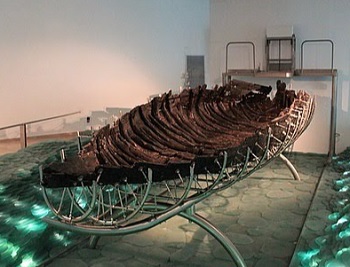
From the Time of Christ and Paul
A major artifact illuminating Christ’s story is the so-called Jesus boat found in the mud near the western shore of the Sea of Galilee. While not really a boat that Jesus sailed in, coin and ceramic evidence indicate that this kind of boat was in use during the time of Christ and is typical of those used by His disciples. This wooden boat, 7.5 by 27 feet, was in use from about 50 B.C. to A.D. 50. Pottery and nails (along with carbon dating) secure the date of the boat to the time of Christ. This boat gives a good sense of what sailing on the Galilee was like in the days of Jesus and His disciples. >click to read< 12:31
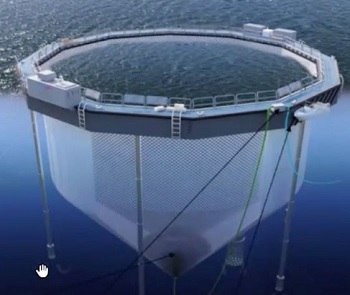
Lobstermen are opposed to this. Stopping American Aquafarms is your fight, too
The project will include 30 in-water fish pens, 150 feet in diameter; dozens of generators to power pumps and lights day and night; barges for feed and waste, and vessels ranging in size from 50 to 150 feet to process the fish and haul fish waste, fish food and thousands of gallons of diesel fuel. The threat to the bay’s waters and ecosystem from water pollution, fish escapes and disease is alarmingly real. Lobstermen who have fished these waters for generations also are opposed to this project. All 26 lobstermen who fish out of Bar Harbor presented a statement of opposition to the Town Council recently, and fishermen from around the bay are following suit. By Dennis Damon, >click to read< 11:19
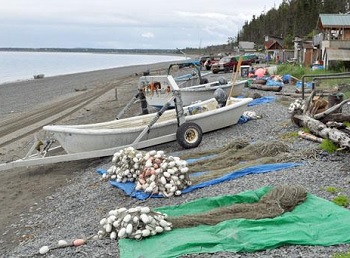
Board of Fisheries has denied two emergency petitions from Kenai Peninsula setnetters
Two setnetters, Chris Every and Paul Shadura II, submitted similar petitions to the board, asking that the department reopen the setnet fishery just out to 600 feet below mean high tide. They argue that the evidence shows that the 600-foot fishery harvests very few king salmon and allows them to harvest the nearshore sockeye, controlling escapement and providing fishing time without seriously risking kings. >click to read< 09:40

UPDATED: Harrowing details of fatal Seacor Power capsizing – ‘All hell broke loose’
The captain of a vessel that was near the Seacor Power when it capsized in the Gulf of Mexico in April, leaving 13 men dead, said Monday that he never heard an emergency radio call from the lift boat as it toppled in a ferocious storm. “I heard Mayday calls from some of the other boats, but I never heard any Mayday calls from the Seacor Power,” said Ted Duthu. In emotional testimony Monday afternoon, independent contractor Dwayne Lewis described a harrowing escape,,, Lewis, who can’t swim, said he bobbed for three hours in the Gulf before a shrimp boat rescued him. “You’re getting beat up, and you’re just begging God to please calm the seas,” he said. >click to read< 08:44
Listen to SEACOR POWER USCG Marine Board Public Hearing-The USCG and NTSB Joint Formal Hearing examining the cause of the capsize and loss of life onboard the SEACOR POWER that occurred on April 13, 2021.
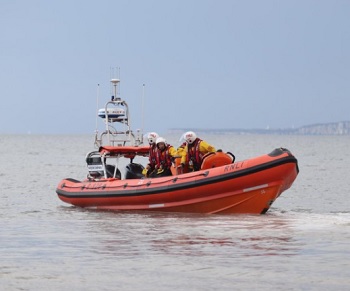
Filey RNLI officially launch new lifeboat paid for entirely by supporter who left money in her will
The late Mrs Shepherd, of Stamford Bridge near York, left enough money in her legacy to entirely fund a new Atlantic 85 lifeboat for Filey’ s RNLI station. The new vessel, which arrived last week, has now been named in honour of the crew’s late supporter, who also left gifts to other charitable causes in her will. The new craft replaces the slower Mersey class boat which left Filey in April, having served the town since 1991. >click to read< 07:58

How lobster fishing began in southern Maine
“Until the twentieth century lobsters could be pulled out from under the rocks,” the preservation society said. “The smaller ones of two pounds or less were often thrown away. Men in a variety of boats, dories, peapods and recently the easily recognized lobster boats powered by motors, set traps along the ledges. Increasing numbers of pots have been attached on a line to a buoy on which each man’s colors can be identified. Most lobstermen spent the winter months making traps, painting buoys and knitting bait bags. Lobstering was usually done in the summer when lobsters moved into warmer waters.” photos, >click to read< 21:37
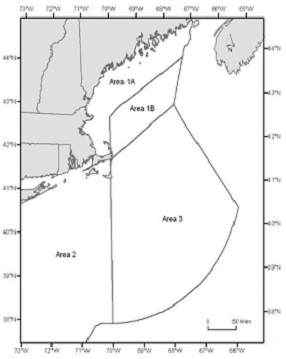
Commercial Atlantic Sea Herring Fishery in Management Area 1A to Close
The Atlantic States Marine Fisheries Commission has projected that the Management Area 1A Atlantic herring fishery will have harvested 92% of its Season I (June 1 – September 30) quota allocation by August 3, 2021. Accordingly, effective at 0001 hours on Tuesday, August 3, 2021, the directed Atlantic sea herring fishery in Management Area 1A will close through September 30, 2021. Unless explicitly authorized, the possession, retention, landing, and sale of Atlantic sea herring taken from Area 1A is prohibited during this closed period. >click to read< 1645
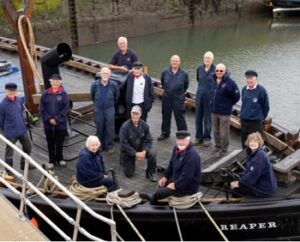
Historic ‘Fifie’ fishing boat Reaper restored, will open to the public on Wednesday
Inspired by Viking longship design and powered by wind alone with their huge, heavy, square lugsails stretching over 3,355sq ft and sleek hulls, ‘Fifies’ became the most popular fishing vessel on Scotland’s North Sea coast during the 19th and early 20th centuries. Karen Seath, Chair of the Scottish Fisheries Museum Trust, said: “The Reaper is a stunning and extraordinary vessel and a significant part of Scotland’s rich national maritime and fishing heritage. She’s a rare survivor of the golden age of sail and our booming herring industry of the past. >photos, click to read< 11:51
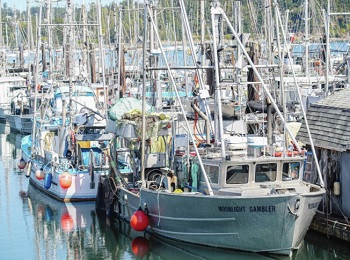
Commercial salmon fishers reeling from sweeping closures
Fourth-generation fisherman Jordan Belveal of Nanaimo was ready to head north on his boat Blue Bayou to catch coho July 1 in Dixon Entrance, between B.C. and Alaska, when he heard about the widespread closures. Although he says he doesn’t mind keeping his boat tied to the dock if it means preserving some runs, Belveal opposed the closures, saying some fisheries with a good abundance of salmon have been cancelled. Losing the 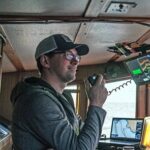 coho fishery has had a “major effect on us,” said Belveal, who operates Island Wild Seafoods with wife Catlin, selling hook-and-line caught sustainable wild seafood to Vancouver Island customers. Belveal is now counting on the Aug. 12 chinook fishery off Haida Gwaii, which would normally have opened in June but was delayed to allow fish to head to their home rivers on Vancouver Island and to the Fraser River, >click to read< 09:56
coho fishery has had a “major effect on us,” said Belveal, who operates Island Wild Seafoods with wife Catlin, selling hook-and-line caught sustainable wild seafood to Vancouver Island customers. Belveal is now counting on the Aug. 12 chinook fishery off Haida Gwaii, which would normally have opened in June but was delayed to allow fish to head to their home rivers on Vancouver Island and to the Fraser River, >click to read< 09:56
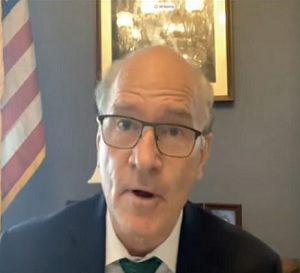
When interlopers bullshit ignorant politicians! – Offshore wind experts testify in Washington
At a virtual hearing of the House Foreign Affairs Subcommittee on Europe, Energy, the Environment, and Cyber hosted by U.S. Rep. Bill Keating, D-Bourne, offshore wind experts gave testimony on the progress of the industry to date and what would benefit its ongoing development in America. Keating prefaced the hearing by describing offshore wind as a “burgeoning, clean, and job-creating energy industry.” Keating called the hearing an opportunity for learning and cooperation and noted America is positioned to establish offshore wind farms thanks to “monumental achievements” made by European pioneers, starting with a 1991 Danish farm, Europe’s first. >click to read< 08:52
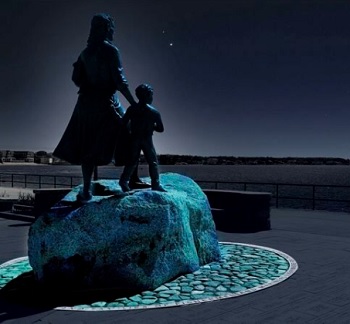
Light shows to honor Gloucester fishermen’s wives
Twenty years ago on the morning of Aug. 5, Angela Sanfilippo, president of the Gloucester Fishermen’s Wives Association, was attending to the final details of the public dedication celebration of the 12-foot Gloucester Fishermen’s Wives Memorial on Stacy Boulevard along Gloucester’s historic harbor. Her joy would soon turn to utter despair. “We had a wonderful event planned but it was very painful because we lost a boat that day,” she recalled. Early that morning, the Gloucester fishing vessel Starbound was struck by a freighter; one crewman survived and three died at sea. “It wasn’t easy that day but we carried on and we wanted to acknowledge the pain of the widows. As women in the fishing industry, we carry on to help with the needs of fishermen, their families and the community. That comes with the title of being a fisherman’s wife,” >click to read< 07:50

Kyle Richard Craig 37, of Sedro Woolley, WA, a Commercial Fisherman, has passed away
Kyle was born on February 6, 1984 in Seattle, WA to Rick and LoRayne Craig of Lynnwood, WA. Kyle was raised in Lynnwood, where as a youth, he enjoyed playing baseball, hockey and earned his athletic letter in golf while attending Edmonds-Woodway High School. Kyle’s love of fishing began as a child while on camping trips with his family to Jameson Lake. Trout fishing on the lake and participating in “Karen’s Fishing Derbies” led to a career as a Commercial Fisherman, fishing for crab in Alaska’s Bering Sea and black cod and halibut in the Gulf of Alaska. He loved the sea, his work, and appreciated his crewmates. >click to read< 19:45
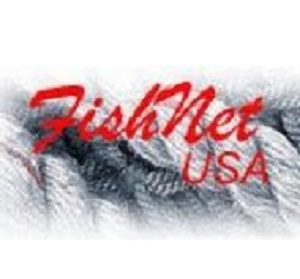
Wind farms: Where are all of the ocean saviors?
The precautionary principle has deep roots finding expression in sayings such as ‘an ounce of prevention is worth a pound of cure’ or ‘better safe than sorry’. The use of the precautionary principle in ecosystem management is especially important,,, Repeated failures of management highlighted by the collapse of northern cod off Canada, the California sardine fishery, and herring, sandeels, blue whiting and capelin stocks in the North Sea have demonstrated the need for this approach in order to help address scientific uncertainty. Yet when it comes to protecting huge swaths of ocean,,, Clog  our near shore and offshore waters with hulking (approaching 1,000 feet tall today, who knows what’s in store for tomorrow?) structures supporting huge rotors with tips moving through the air at velocities approaching 200 miles per hour? So what? Festoon our sea beds with electrical cables carrying huge amounts of electricity, And what of undersea server farms,,, >click to read< 15:43 Nils E. Stolpe/FishNet USA. © 2021 Nils E. Stolpe, July 31
our near shore and offshore waters with hulking (approaching 1,000 feet tall today, who knows what’s in store for tomorrow?) structures supporting huge rotors with tips moving through the air at velocities approaching 200 miles per hour? So what? Festoon our sea beds with electrical cables carrying huge amounts of electricity, And what of undersea server farms,,, >click to read< 15:43 Nils E. Stolpe/FishNet USA. © 2021 Nils E. Stolpe, July 31
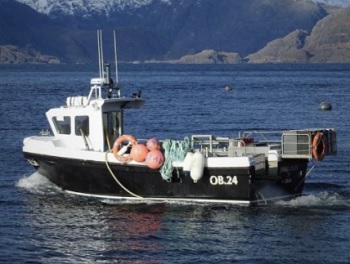
The grants have been an absolute lifeline – Resilience Fund Supports the Fleet
More than 850 fishing vessels affected by Coronavirus and Brexit have received resilience funding from the Scottish Government this year. ‘I’m hugely grateful for the Scottish Government’s speedy response to our dire situation, firstly in March 2020 when there was the COVID-19 ‘market collapse’ and then in February in when the chaos caused by Brexit export restrictions hit us like a brick,’ said Kenneth Lamond, owner and skipper of the F/V Dunan Star which trawls for prawns around Skye, Small Isles and the Minches. ‘The speed with which the grant package got to boats saved many jobs and livelihoods up here – we couldn’t have got to sea without this aid and I would have had to let my crew go. The timely assistance is directly responsible for three families’ continued livelihoods and our tiny fishing community around Elgol would have been really struggling without this aid.’ >click to read< 13:58

Water content deductions keeping harvesters sitting out the summers sea cucumber fishery
Sea cucumbers represent a $10-million industry in Newfoundland and Labrador, according to Fish Food & Allied Workers president Keith Sullivan. The creatures are a delicacy in Asian countries and other markets, and fetch a price of 70 cents per pound, according to the province’s fishery pricing panel. When catches are landed, processors drain the water inside sea cucumbers to remove the weight of the sea water from the buying price. 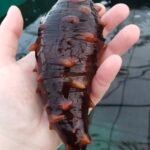 Harvesters used to deduct 23 per cent of the sea cucumber’s weight across the board to account for the water, but that percentage has been changed in the past year, and Sullivan says the harvesters’ bottom lines are being impacted. “Whereas other years you might be getting paid for 80 per cent or close to that of the animal, this year in a couple of cases we’re talking just over 50 per cent,” >click to read< 11:43
Harvesters used to deduct 23 per cent of the sea cucumber’s weight across the board to account for the water, but that percentage has been changed in the past year, and Sullivan says the harvesters’ bottom lines are being impacted. “Whereas other years you might be getting paid for 80 per cent or close to that of the animal, this year in a couple of cases we’re talking just over 50 per cent,” >click to read< 11:43
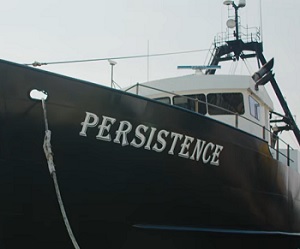
Fishermen in NCLA Video Explain the Need to Reel in NOAA’s at-Sea Monitor Rule
The New Civil Liberties Alliance released a video today outlining why it is unconstitutional to force Atlantic herring fishermen to fund government-mandated monitors at sea. It is “the equivalent of having a cop in your car who’s policing you while you drive, and you have to pay his salary out of your own pocket,” said Meghan Lapp, Fisheries Liaison & General Manager for Seafreeze, Ltd. about the rule being challenged in Relentless Inc., et al. v. U.S. Dept. of Commerce, et al. NCLA, a nonpartisan, nonprofit civil rights group, represents these private fishing companies,,, The at-sea monitor mandate, issued in 2018, is unlawfully “industry-funded.” >click to read< 08:50
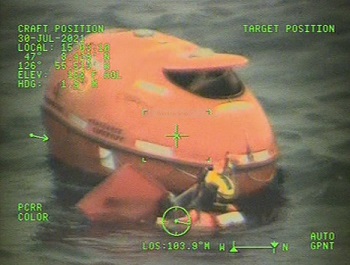
EPIRB alert launches Coast Guard rescue of a fisherman in a life raft Saturday, offshore of Grays Harbor.
At 11:39 a.m., Friday, watchstanders at the 13th Coast Guard District Command Center received an emergency position indicating radio beacon activation alert for the fishing vessel F/V Ruby Lily approximately 132 miles from Grays Harbor. Watchstanders launched crews from Coast Guard Air Station Astoria, Coast Guard Air Station Sacramento and the Coast Guard Cutter Alert to respond. A U.S. Navy P-8A Poseidon in the vicinity of the vessel self diverted to respond to the scene and reported one person aboard the life raft. The man aboard, who was also the owner of the Ruby Lily, reported he was safe in the rigid hull life raft with two weeks of food and water. A good Samaritan vessel in the area offered assistance, but the man on the life raft reportedly refused assistance from the good Samaritan. >click to read< 07:39


































